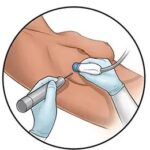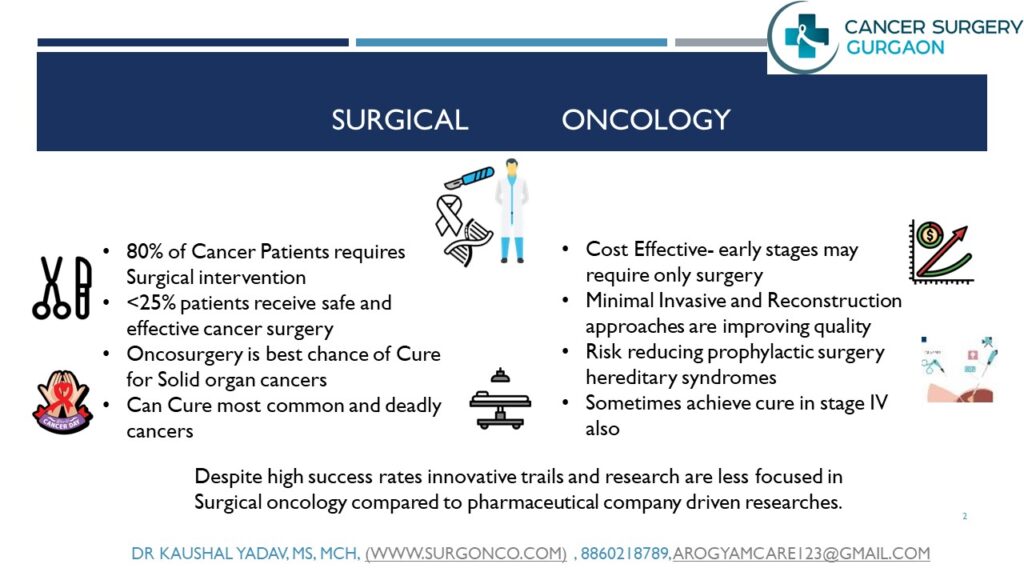What is biopsy tests for Cancer Diagnosis?
A biopsy is a procedure for the diagnosis of cancer. It involves the removal of tissue from the diseased part for examination under a microscope. This examination identifies the changes in cells and based on that diagnosis is made.
Why biopsy is done for tumor?
- Biopsy confirm the presence of cancer
- identify the type of cancer
- help in planning treatment
- Further molecular testing can be done for personalized cancer care of precision oncology.

Types of biopsy test in cancer:
- Fine-needle Aspiration Cytology (FNAC): This is a cytology test; means examination of cells for changes and it is
 not a biopsy procedure. A thin needle is used to withdraw fluid and cells. Helpful in initial assessment. Advance IHC tests are not possible on FNAC and are less reliable than biopsy. FNAC is very helpful in diagnosis of disease in many organs like thyroid gland nodule, parotid swelling, and confirmation of recurrence or cytology of abnormal fluid.
not a biopsy procedure. A thin needle is used to withdraw fluid and cells. Helpful in initial assessment. Advance IHC tests are not possible on FNAC and are less reliable than biopsy. FNAC is very helpful in diagnosis of disease in many organs like thyroid gland nodule, parotid swelling, and confirmation of recurrence or cytology of abnormal fluid.  Core Biopsy or Gun Needle Biopsy or trucut biopsy: A needle is used to extract tissue. It is employed for masses that are palpable or visible on examination like breast lump, sarcoma. Trucut biopsy decision should always be take by Surgical Oncologist after proper examination. There are some swellings where biopsy should not be done like hemangioma. There are some swellings where biopsy is not required if examination is confirmatory of benign disease like lipoma. In breast lump biopsy should be done mammography by breast cancer surgeon. In sarcoma biopsy should be done after MRI. Biopsy track should be along the final surgery incision line so that it can be removed in Surgery. That is why biopsy should always be planned with advise of Surgical Oncologist.
Core Biopsy or Gun Needle Biopsy or trucut biopsy: A needle is used to extract tissue. It is employed for masses that are palpable or visible on examination like breast lump, sarcoma. Trucut biopsy decision should always be take by Surgical Oncologist after proper examination. There are some swellings where biopsy should not be done like hemangioma. There are some swellings where biopsy is not required if examination is confirmatory of benign disease like lipoma. In breast lump biopsy should be done mammography by breast cancer surgeon. In sarcoma biopsy should be done after MRI. Biopsy track should be along the final surgery incision line so that it can be removed in Surgery. That is why biopsy should always be planned with advise of Surgical Oncologist.- Punch Biopsy: Biopsy is done from growth or ulcer with the help of a small punch like tip of instrument. Punch biopsy is usually done for ulcer or growth at edge like oral cavity ulcers, skin ulcers.

- Image-guided Biopsy: Combines imaging techniques like ultrasound guided biopsy or CT scan guided biopsy; for guiding needle to biopsy the target areas that aren’t easily accessible or not palpable.

- Vacuum assisted Biopsy (VAB Biopsy): A vacuum-powered instrument helps to collect multiple tissue samples through a single needle insertion.
- Endoscopic Biopsy: Utilizes an endoscope—a flexible tube with a camera—to visualize the inside of the body and remove tissue. It’s particularly useful for examining the gastrointestinal tract, urinary bladder, uterus and other internal organs.
 Bone Marrow Biopsy: This procedure is essential for diagnosing blood cancers like leukemia and lymphoma. A needle is used to collect bone marrow, usually from the hip bone.
Bone Marrow Biopsy: This procedure is essential for diagnosing blood cancers like leukemia and lymphoma. A needle is used to collect bone marrow, usually from the hip bone.- Skin Biopsy: In cases of suspected skin cancer, a small piece of skin is removed and examined for malignancy.

 Surgical Biopsy: Sometimes when lesser biopsy tissue is inadequate or disease in a difficult location or surgical biopsy is considered safer compared to intervention than surgical procedure is necessary to remove tissue. This can be an incision biopsy (removing part of the abnormal tissue) or an excision biopsy (removing all of it). In testicular cancers complete testis is removed by a surgery called high inguinal ligation and direct biopsy from the testis is not advised by oncologists.
Surgical Biopsy: Sometimes when lesser biopsy tissue is inadequate or disease in a difficult location or surgical biopsy is considered safer compared to intervention than surgical procedure is necessary to remove tissue. This can be an incision biopsy (removing part of the abnormal tissue) or an excision biopsy (removing all of it). In testicular cancers complete testis is removed by a surgery called high inguinal ligation and direct biopsy from the testis is not advised by oncologists. Liquid Biopsy: A newer technique that detects cancer cells or DNA in the blood. It’s less invasive and can be used to monitor treatment response or detect cancer recurrence. A prior tissue biopsy is required for diagnosis and grade of disease and liquid biopsy is not a replacement of tissue biopsies mentioned earlier but it is a complementary test
Liquid Biopsy: A newer technique that detects cancer cells or DNA in the blood. It’s less invasive and can be used to monitor treatment response or detect cancer recurrence. A prior tissue biopsy is required for diagnosis and grade of disease and liquid biopsy is not a replacement of tissue biopsies mentioned earlier but it is a complementary test- Frozen Section: In cancer where there risk of spillage of cancer cells, biopsy is not done. In these cases complete mass or tumor is removed intact during surgery and histology checkup is done. This takes around 20-30min. If cancer is found on frozen section than complete radical surgery is done during same surgery. Such cancers includes ovarian cancers, gall bladder cancer. Occasionally frozen is not able to detect cancers cells, in that case if cancer is detected on final histopathology than repeat radical surgery is required.
- Diagnostic Laparoscopy or thoracoscopy: are minimal invasive surgical techniques utilized and helpful in situations when other methos fail to diagnose problem located inside abdomen or chest.
The choice of biopsy is determined by factors such as the location, size, and nature of the suspected cancer. The procedure is usually performed under local anesthesia, but in some cases, sedation or general anesthesia may be required.
Myths and facts about biopsy
Biopsies are integral to the cancer diagnosis process, guiding treatment decisions and enabling a personalized approach to patient care. There are several myths and misconceptions surround this procedure, causing unnecessary fear and hesitation among patients.
- Myth: Biopsy can spread the cancer. A common concern is than biopsy can spread cancer.
Fact: This belief has been debunked by numerous studies, which have shown that biopsies do not promote the dissemination of cancer cells.
- Myth: Biopsy is very painful and risky.
Fact: While any medical procedure carries some degree of risk, biopsies are generally safe and performed under local anesthesia to minimize discomfort. The benefits of obtaining an accurate diagnosis far outweigh the potential risks associated with the procedure.
- Myth: Biopsy always detect the cancer
Fact: While biopsies are highly reliable, there are instances where the sample may not be sufficient or the results inconclusive, necessitating further testing or repeat procedures.
- Myth: Biopsy detect only cancer and it is done only for cancer diagnosis
Fact: While biopsies are most commonly done for establishing diagnosis of cancer, but sometimes biopy is done to diagnose other diseases like tuberculosis, sarcoidosis and other benign diseases.
Biopsy is an important investigation which guide diagnosis of cancer, type of cancer, guide treatment. Further molecular testing is possible on biopsy for guiding targeted therapy and immunotherapy for personalized cancer care.
What are the precautions while doing biopsy
- Biopsy should be done from most easily accessible area
- Should not violate healthy cavity or compartment in between.
- In some cancers especially in sarcoma biopsy track should be planned like that it will be removed in final surgical treatment
- Should be done in consultation with or under supervision of Surgical Oncologist dealing with the problem
- All safety measures should be ensured prior to performing biopsy



